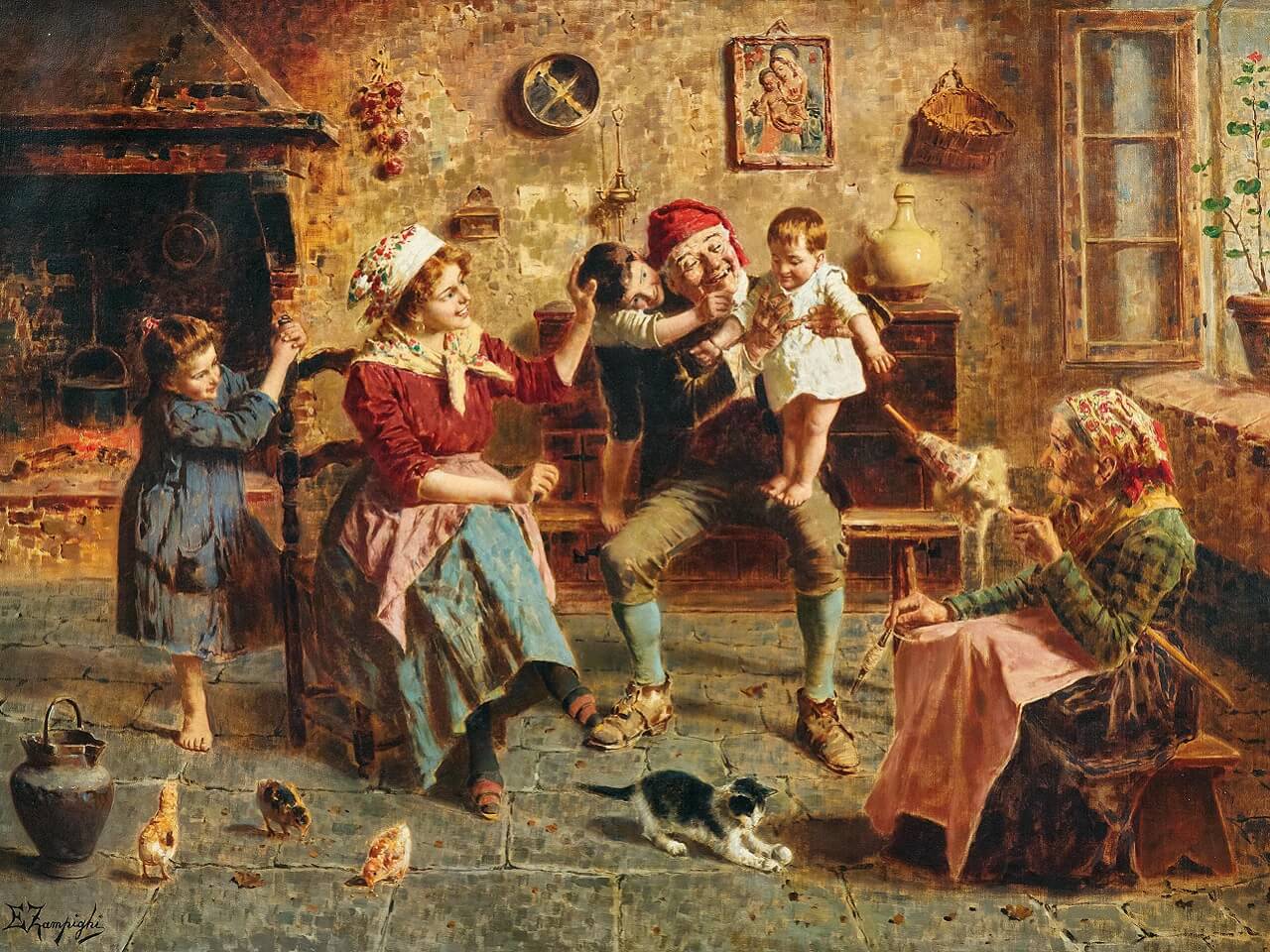Liturgical Living in the Home
Recently, a young mom asked me how to incorporate all the beautiful feasts and seasons into family life. Now, as I believe this is quite a saintly ambition, it is also not without the potential for undue stress and setting oneself up for failure. These statements are not to discourage anyone from incorporating liturgical living into their home, but to recognize that “Rome was not built in a day” and progression in the spiritual life also cannot be attained in one firm resolution. Habitual change occurs in a rather organic process. To cultivate a home built upon Christ, it is necessary to begin at the roots and build upon each feast day and fasting day, so the beautiful traditions of Catholicism become second nature to yourself, your children, and future generations.
There is no doubt that many Catholics are floundering to understand the Church’s teachings, the liturgical traditions, and the spiritual love for Our Lord in the Blessed Sacrament. Catholic practices that were once second nature to family life, only a few generations back, now seem like a foreign language. Even though the Catholic Church has suffered a dear loss in its waning traditions, several small flames have continued to burn in the hope of a pure and holy revival of Christendom.

One of those small burning flames was held by the hearts of my maternal grandparents. It was their love for the Church that motivated them to pass on their love of the faith to future generations, whether that was in teaching the Catechism, observing the ember days, abstaining from meat on Fridays, celebrating the feast and liturgical seasons, and understanding the significance behind these practices. It is through these traditions that the clergy and laity are given opportunities to foster their spiritual lives, glorify God, and strive towards sainthood, rather than a dependence on bodily desires.
With the gift of my grandparents and parents who transferred their knowledge of Catholic tradition to their children, it is only natural for me to also desire and encourage the same for my young family. I am truly aware of this gift and how many adults search for these truths and traditions that are not so prevalent in the 21st century. So, with this gift, I desire to share a perspective that hopes to encourage, enamor, and facilitate traditions that will fit well within your family and community. It is easy to find resources on the internet that pertain to Catholic liturgical living, but it isn’t always easy to incorporate them or choose among the many options. The best way to implement such practices is to let them grow organically.
It is paramount to first learn and understand the liturgical seasons, in a broad sense, the main Church cycles are Christmas and Easter. These seasons each have supernatural and liturgical purposes, not only in conjunction with the liturgy, but they also may be applied within the home. Each season coordinates predictably with specific colors, such as purple (penitential) for Advent and Lent, white and gold for Christmas and Easter, and green (hope and new life) during the time of Pentecost. Now, these colors will occasionally change for non-Sunday Masses depending on if it is the Mass of a martyr, virgin, bishop, confessor, etc. However, incorporating the colors of the liturgical seasons is a simple, but effective way to focus on that cycle within the family. This could include adding liturgical colored flowers to a home altar or linens of purple, green, and white to change with the season. It would be wrong to discuss colors without including blue for Our Lady, especially blue on Saturdays as that is the day designated to honor the Blessed Virgin. The predictable changing of these colors for the applicable seasons assists in reminding faithful Catholics of their goals during that liturgical time. It is within these seasons that a family can build an adherence to the feasts and fasts of the liturgical year.
Any family, especially ones with small children, can easily observe specific saint days. It is quite common for each family to have their own special devotions to specific saints. For my family, we have a deep love for St. Joseph and every March 19th a large spaghetti dinner is served with the traditional breads and sweets of the St. Joseph Table originating from Sicily. Our Lady of Fatima is another day of feasting in our home, as my great-grandparents immigrated to the United States from Portugal in the early 20th century. If you aren’t sure where to begin or which feast day to celebrate, read a collection of saint stories. God has given us a variety of saints, whether based on their professions, their upbringings, their sufferings and joys, or their temperaments that attract our earthly souls to these heavenly souls. Find one that may be a model of virtue for your family and your own spiritual journey. As you become comfortable, add more feast days to your family traditions, but remember, less is more. God understands the limitations of our human nature, for we do not want to overwhelm our spiritual journey, but to ennoble it.
The goal is to create a holy home of peace and joy that uplifts souls to Christ. The home is never completely untouched by the infiltration of secularism; however, it is possible to replace material distractions with spiritual repose. This can be observed through the life of the Holy Family and their undying love for God and His glory. It is not through extravagant celebrations or expensive décor pieces that our minds will be uplifted, but rather, through the small consistent actions of love and adoration that bring our hearts closer to Christ. So, rather than being tempted to compete with other families who observe countless feasts and fasts, begin small and add additional traditions as your family sees fit. There’s no faster way to failure than through unrealistic and overwhelming goals. God does not expect us to become saints in a day; it takes a lifetime to grow in sanctity. Give yourself and other family members grace, as you all grow together along differing paths of the spiritual life, but all with the same goal – sainthood for God’s glory.


